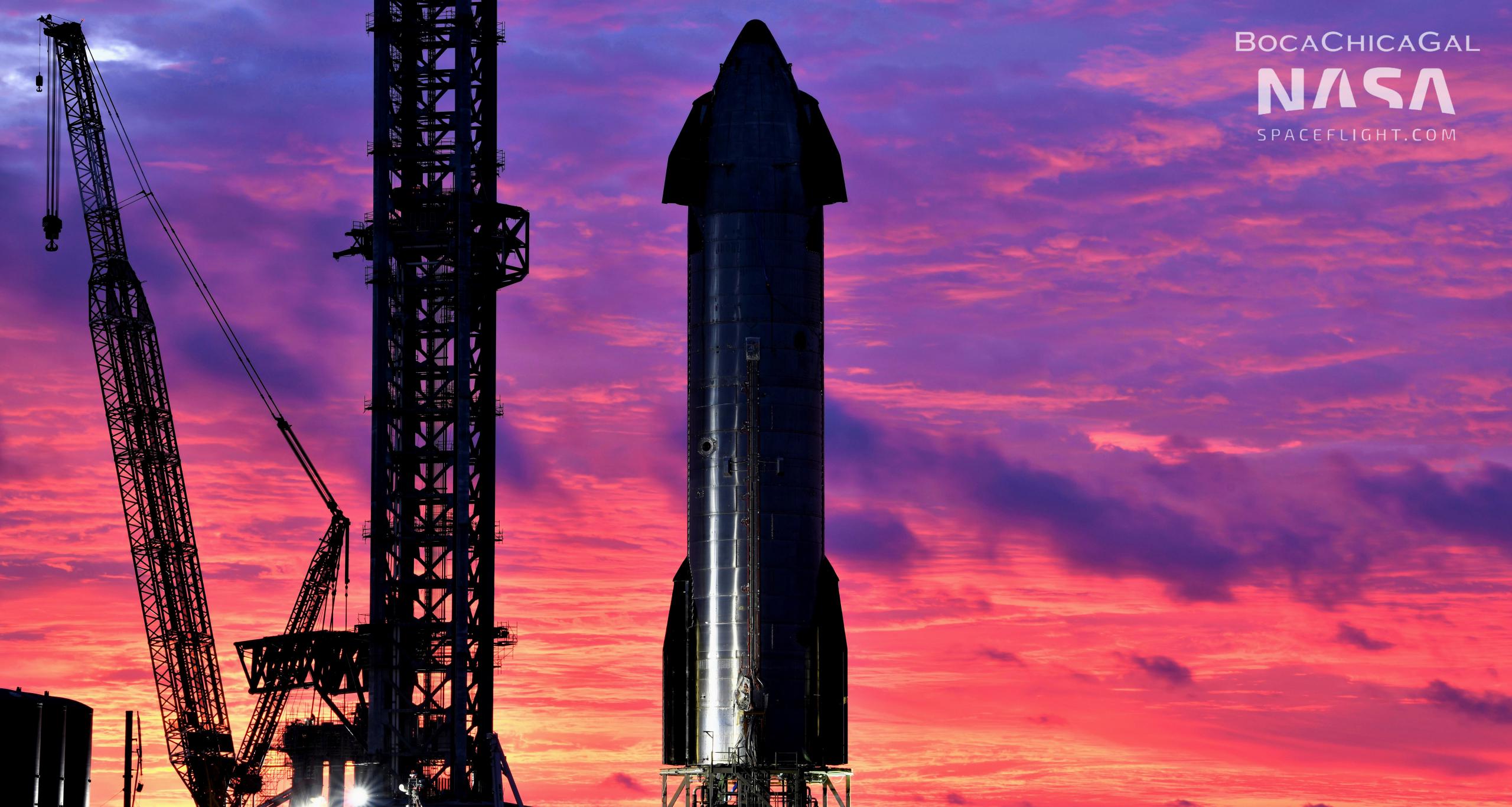
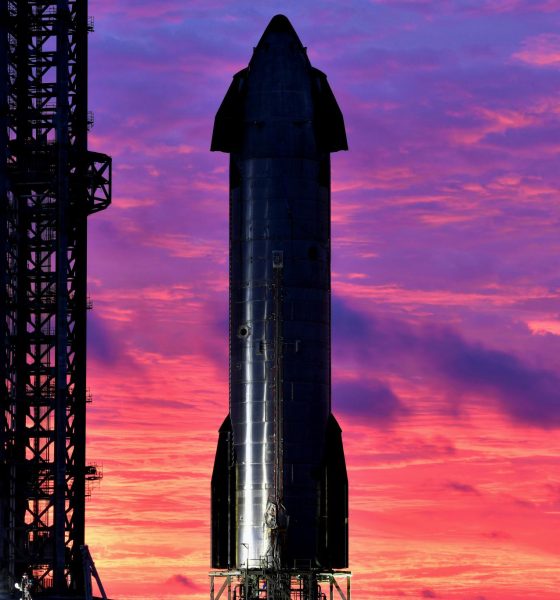
News
SpaceX Starship prototype ready for record-breaking tests
Over the weekend, SpaceX has installed the last of its first orbital-class Starship’s six Raptor engines, setting the prototype up for one or several record-breaking tests later this week.
Tentatively scheduled as early as 10am to 6pm CDT on Monday Tuesday, November 1st 2nd, the next test up on Starship 20’s (S20) docket will likely be its third static fire in eleven days. Ship 20 completed its first Raptor-involved test – known as a preburner test – on October 19th, followed by two successful back-to-back static fires – one with one Raptor and one with two – on October 21st.
Less than 36 hours later, the Starship’s two missing Raptor Center (RC) engines (of a total of three) had been installed by Friday morning, October 22nd. For unknown reasons, no testing was completed the following week it and it took SpaceX another six and a half days to deliver the final two missing engines to the pad for installation on S20. Regardless, both missing Raptor Vacuum engines were installed by 2am CDT on Saturday, October 30th, marking the second time a Starship prototype has had all six Raptors installed.
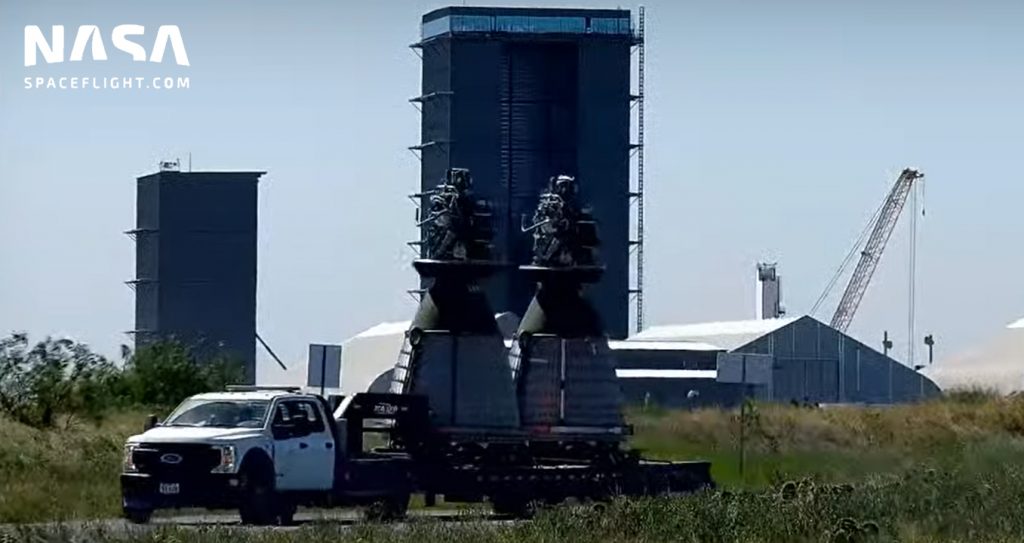
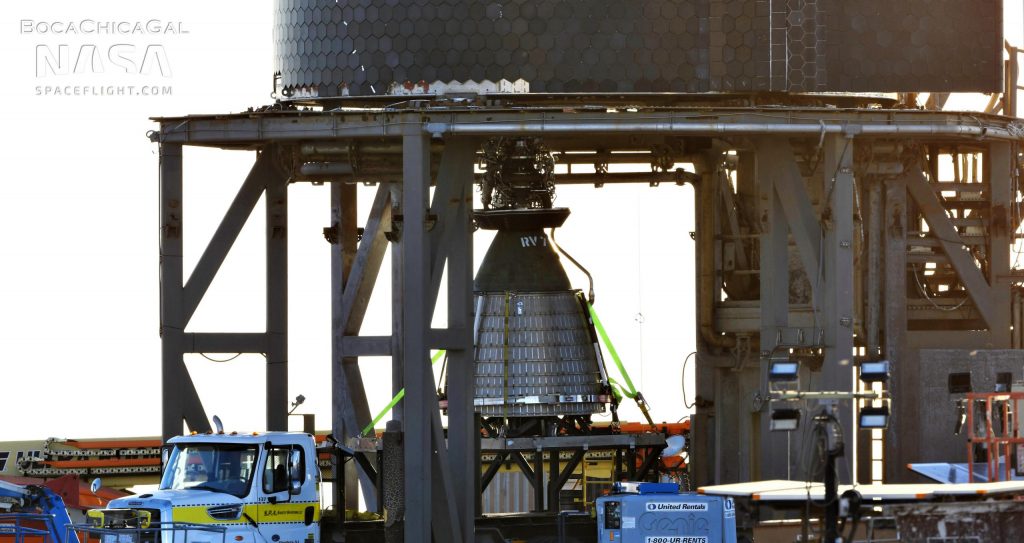
While it might be the second time SpaceX has installed six Raptors on a Starship, it’s likely the first time six engines have been fully integrated with Ship 20’s propellant tanks, gas supplies, and avionics. How exactly SpaceX plans to proceed is unclear but odds are good that Starship S20’s next static fire test campaign will involve simultaneous igniting at least four of its six Raptor engines, setting a new record for the number of Raptors simultaneously ignited.
More likely than not, though, Ship 20’s next campaign will culminate in the simultaneous ignition of all six Raptors to (hopefully) complete the first true orbital-class Starship static fire. Like SpaceX has only just begun to do with Falcon boosters, flight-proven Starships might eventually be able to skip preflight static fire tests, but it’s virtually guaranteed that SpaceX will still proof test Starship and Super Heavy before flights until ships, boosters, and Raptors have stable designs with substantial flight experience. To ensure full-fidelity testing, those static fires will always have to qualify all installed engines. That includes Starship, which is designed to burn both its sea-level and vacuum-optimized Raptors from booster separation to orbit.
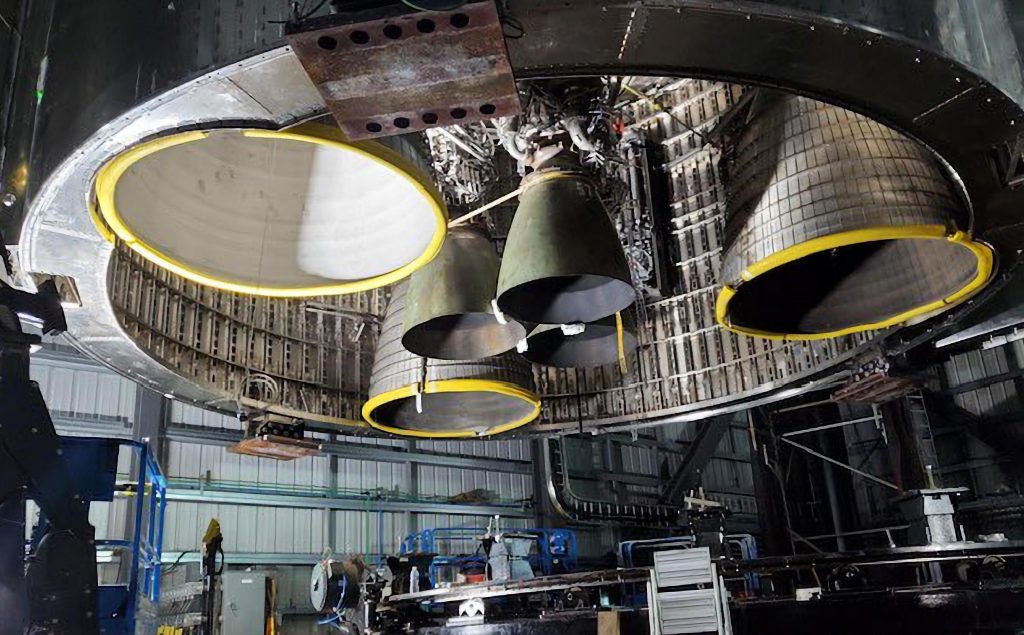
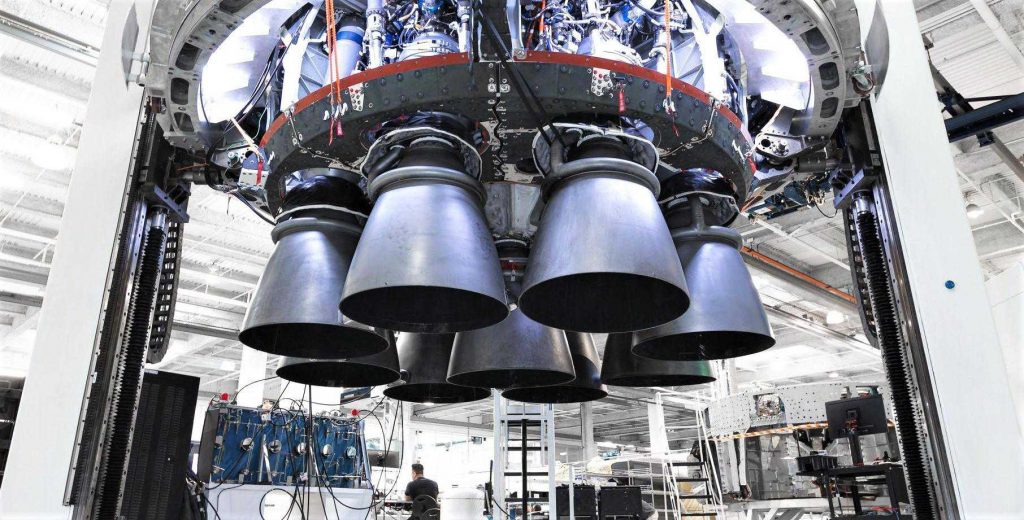
At full throttle, depending on the efficiency of its three RVacs at sea level, Starship S20’s six Raptor V1.0 engines could produce ~1100 tons (~2.4M lbf) of thrust. By comparison, SpaceX’s workhorse Falcon 9 rocket produces around 760 tons (~1.7M lbf) of thrust at liftoff, meaning that Starship will likely become the most powerful single-core rocket the company has ever tested even if it never throttles above ~70%.
There’s a good chance that SpaceX will start Ship 20’s next round of tests by separately firing both sets of three Raptor Center and Vacuum engines or with a mixed three or four-engine test to follow the latest two-engine test. SpaceX could also take the most iterative approach and test three, four, and five engines at a time before the final six-engine test. Regardless, virtually all possible static fire tests Ship 20 is now configured to perform will be program ‘firsts’ of some kind.

News
Tesla FSD fleet is nearing 7 billion total miles, including 2.5 billion city miles
As can be seen on Tesla’s official FSD webpage, vehicles equipped with the system have now navigated over 6.99 billion miles.

Tesla’s Full Self-Driving (Supervised) fleet is closing in on almost 7 billion total miles driven, as per data posted by the company on its official FSD webpage.
These figures hint at the massive scale of data fueling Tesla’s rapid FSD improvements, which have been quite notable as of late.
FSD mileage milestones
As can be seen on Tesla’s official FSD webpage, vehicles equipped with the system have now navigated over 6.99 billion miles. Tesla owner and avid FSD tester Whole Mars Catalog also shared a screenshot indicating that from the nearly 7 billion miles traveled by the FSD fleet, more than 2.5 billion miles were driven inside cities.
City miles are particularly valuable for complex urban scenarios like unprotected turns, pedestrian interactions, and traffic lights. This is also the difference-maker for FSD, as only complex solutions, such as Waymo’s self-driving taxis, operate similarly on inner-city streets. And even then, incidents such as the San Francisco blackouts have proven challenging for sensor-rich vehicles like Waymos.
Tesla’s data edge
Tesla has a number of advantages in the autonomous vehicle sector, one of which is the size of its fleet and the number of vehicles training FSD on real-world roads. Tesla’s nearly 7 billion FSD miles then allow the company to roll out updates that make its vehicles behave like they are being driven by experienced drivers, even if they are operating on their own.
So notable are Tesla’s improvements to FSD that NVIDIA Director of Robotics Jim Fan, after experiencing FSD v14, noted that the system is the first AI that passes what he described as a “Physical Turing Test.”
“Despite knowing exactly how robot learning works, I still find it magical watching the steering wheel turn by itself. First it feels surreal, next it becomes routine. Then, like the smartphone, taking it away actively hurts. This is how humanity gets rewired and glued to god-like technologies,” Fan wrote in a post on X.
News
Tesla starts showing how FSD will change lives in Europe
Local officials tested the system on narrow country roads and were impressed by FSD’s smooth, human-like driving, with some calling the service a game-changer for everyday life in areas that are far from urban centers.

Tesla has launched Europe’s first public shuttle service using Full Self-Driving (Supervised) in the rural Eifelkreis Bitburg-Prüm region of Germany, demonstrating how the technology can restore independence and mobility for people who struggle with limited transport options.
Local officials tested the system on narrow country roads and were impressed by FSD’s smooth, human-like driving, with some calling the service a game-changer for everyday life in areas that are far from urban centers.
Officials see real impact on rural residents
Arzfeld Mayor Johannes Kuhl and District Administrator Andreas Kruppert personally tested the Tesla shuttle service. This allowed them to see just how well FSD navigated winding lanes and rural roads confidently. Kruppert said, “Autonomous driving sounds like science fiction to many, but we simply see here that it works totally well in rural regions too.” Kuhl, for his part, also noted that FSD “feels like a very experienced driver.”
The pilot complements the area’s “Citizen Bus” program, which provides on-demand rides for elderly residents who can no longer drive themselves. Tesla Europe shared a video of a demonstration of the service, highlighting how FSD gives people their freedom back, even in places where public transport is not as prevalent.
What the Ministry for Economic Affairs and Transport says
Rhineland-Palatinate’s Minister Daniela Schmitt supported the project, praising the collaboration that made this “first of its kind in Europe” possible. As per the ministry, the rural rollout for the service shows FSD’s potential beyond major cities, and it delivers tangible benefits like grocery runs, doctor visits, and social connections for isolated residents.
“Reliable and flexible mobility is especially vital in rural areas. With the launch of a shuttle service using self-driving vehicles (FSD supervised) by Tesla in the Eifelkreis Bitburg-Prüm, an innovative pilot project is now getting underway that complements local community bus services. It is the first project of its kind in Europe.
“The result is a real gain for rural mobility: greater accessibility, more flexibility and tangible benefits for everyday life. A strong signal for innovation, cooperation and future-oriented mobility beyond urban centers,” the ministry wrote in a LinkedIn post.
News
Tesla China quietly posts Robotaxi-related job listing
Tesla China is currently seeking a Low Voltage Electrical Engineer to work on circuit board design for the company’s autonomous vehicles.

Tesla has posted a new job listing in Shanghai explicitly tied to its Robotaxi program, fueling speculation that the company is preparing to launch its dedicated autonomous ride-hailing service in China.
As noted in the listing, Tesla China is currently seeking a Low Voltage Electrical Engineer to work on circuit board design for the company’s autonomous vehicles.
Robotaxi-specific role
The listing, which was shared on social media platform X by industry watcher @tslaming, suggested that Tesla China is looking to fill the role urgently. The job listing itself specifically mentions that the person hired for the role will be working on the Low Voltage Hardware team, which would design the circuit boards that would serve as the nervous system of the Robotaxi.
Key tasks for the role, as indicated in the job listing, include collaboration with PCB layout, firmware, mechanical, program management, and validation teams, among other responsibilities. The role is based in Shanghai.
China Robotaxi launch
China represents a massive potential market for robotaxis, with its dense urban centers and supportive policies in select cities. Tesla has limited permission to roll out FSD in the country, though despite this, its vehicles have been hailed as among the best in the market when it comes to autonomous features. So far, at least, it appears that China supports Tesla’s FSD and Robotaxi rollout.
This was hinted at in November, when Tesla brought the Cybercab to the 8th China International Import Expo (CIIE) in Shanghai, marking the first time that the autonomous two-seater was brought to the Asia-Pacific region. The vehicle, despite not having a release date in China, received a significant amount of interest among the event’s attendees.








